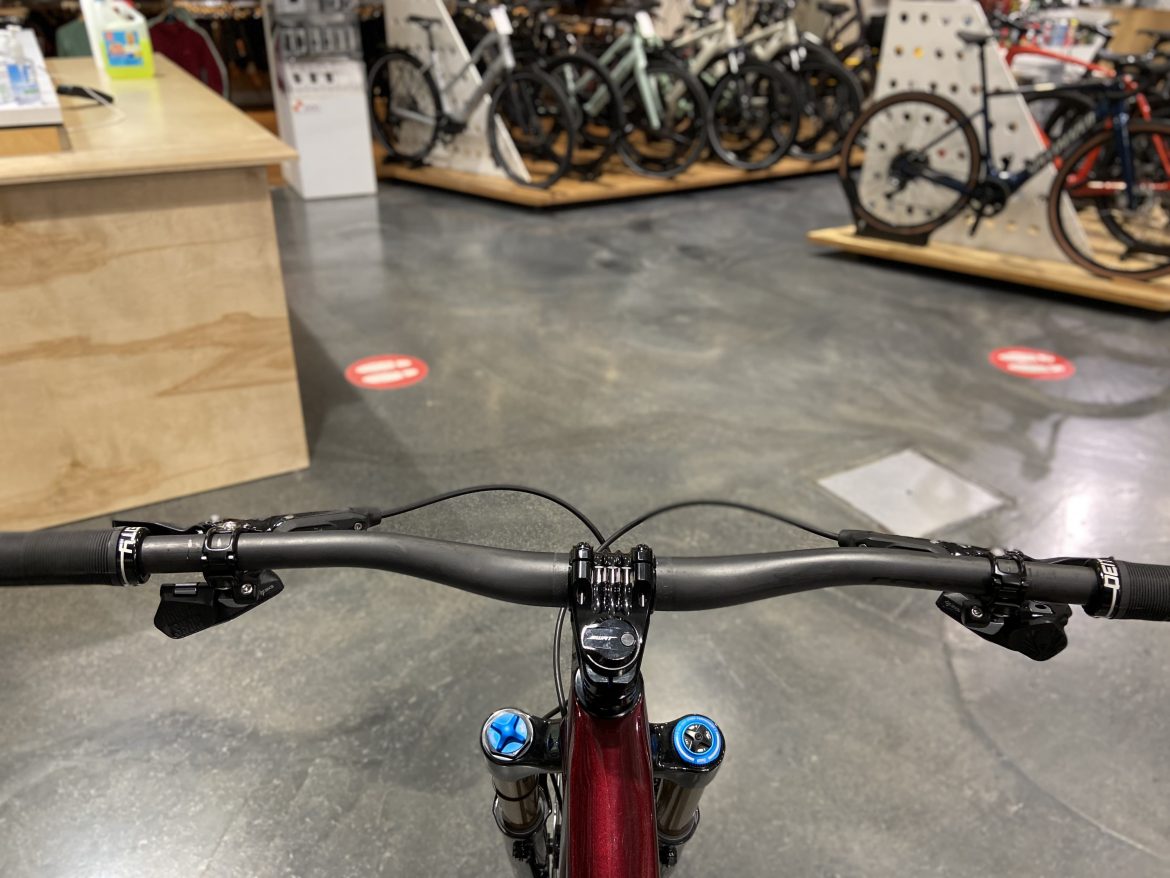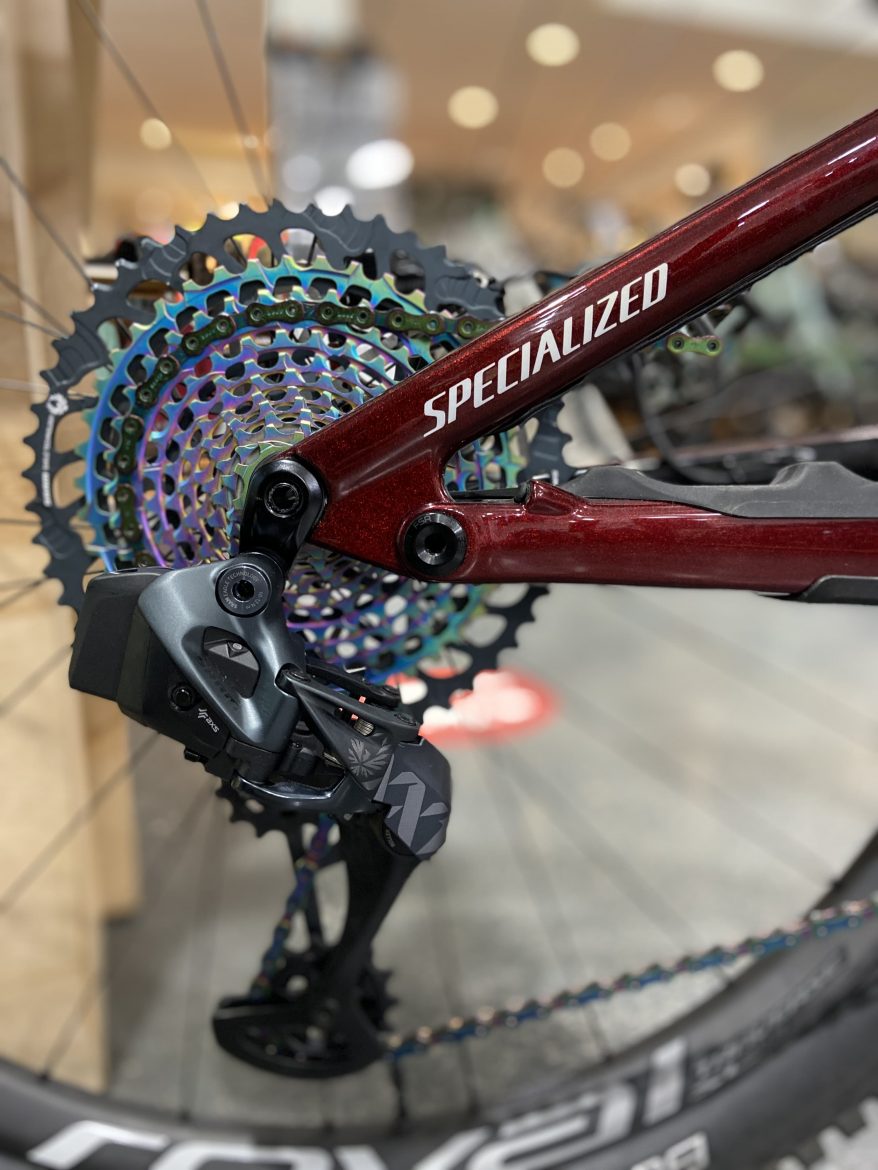
Any opinions expressed in this article belong to the author alone, and do not necessarily represent the opinions of Singletracks.com.
Electronic shifting is one of those things that seems to divide opinion a little, particularly among mountain bikers. We’re a real fickle bunch. We love anything new and exciting, so long as it fits roughly within our parameters of what’s normal and acceptable. We also love to complain about new ‘standards’ and anything that adds extra complication to our rides. Rather than immediately rejecting a new idea or standards, I prefer a healthy amount of skepticism and critique before making my mind up. After all, some of these ideas can turn out to be pretty great — remember when dropper posts first started to become commonplace? Some ideas are also total flops; remember plus-size tires?
So how about electronic shifting? Well, it’s obviously fairly new in the mountain bike world, and it definitely presents some extra complication to what in years past had been relatively simple — the derailleur. Thing is, derailleurs have been getting more and more complex in recent years even without the integration of any electronics, so surely why not continue along that path, right? Anyone who remembers how simple to set up and easy to adjust Shimano 9 speed rear derailleurs were might be inclined to disagree, and I’m not sure I agree either.
Maybe to figure this one out we need to look at the problem electronic shifting aims to solve. It eliminates the need for a shift cable, which means two things. It makes a bike easier to build and the drivetrain easier to fit since there’s no need to spend time routing a cable through the frame, at least for SRAM’s AXS groupset. It certainly does cut down on install time, but not by a whole lot, and if that’s the main problem, why don’t we just go back to externally routed cables? Don’t get me wrong, wireless shifting makes a LOT of sense when it comes to aero-road bikes, and probably goes a long way to explain why we’re seeing more SRAM wireless groups on road bikes now that we’re seeing more integration — but don’t forget, SRAM’s eTap wireless road groups have been around for quite some time already. More integration is starting to creep into the mountain bike arena too, and again it makes sense to go wireless if there’s physically no nice way to route a mechanical cable.

An electronic drivetrain means there’s no degradation of shift quality due to the corrosion/wear in the cables, which is great if you’re the kind of person that likes their bike to work with minimal maintenance. That said, if the aim is to make things easier for the home mechanic, well that doesn’t make much sense to me because most home mechanics likely work on their own bikes because they don’t want to pay somebody to do work they can do themselves. Any budget-savvy rider is not likely to spring for an AXS drivetrain. That just leaves the people that take their bike to a shop, and changing a shift cable isn’t exactly a big or expensive job, unless you own an aero road bike.
So again, what problem are we solving here? Complexity/mess? I’ll admit that the two-hose view from the cockpit of a SRAM AXS-equipped bike is quite nice, particularly when compared to the tangled mess aboard some bikes where the manufacturers still insist on using fork and shock lockouts, but that’s a rant for another day. If we’re aiming for a setup that makes life easy for the majority of riders, SRAM wireless AXS Reverb makes a lot of sense; not only does it mean a SUPER easy install, no cabling, and easy maintenance, it also means it’s easy to swap between bikes if necessary. But most of all, it means you can easily adjust the seat height without having to push and pull cables, potentially kinking them or messing up the tension. This makes sense, and I’m on board.

The problem is, I’m still struggling to get on board with electronic shifting. SRAM’s AXS Eagle definitely shifts nice and crisp every single time, but it lacks the haptic feedback in the shifter that I’m used to. That’s something I’d likely get used to, and most people running electric have. It definitely makes installation and maintenance a little easier, but not appreciably. It’s still susceptible to many of the same issues that plague mechanical derailleurs: bent hangers, bent cages, worn pulley wheels, sloppy pivots, and all the other mechanical problems that are still present. In my experience, the shifting seems to stay good marginally longer than a mechanical setup.
I have yet to talk about the actual electronic aspects of electronic drivetrains. Did you know you can wirelessly update the firmware on an AXS derailleur from your phone? But hold on a second, did you know that you never need to update the firmware on a mechanical derailleur? That’s right, never! Nor do you need to charge the batteries in your mechanical derailleur, or replace the coin cells in your mechanical shifter. Pretty convenient, am I right? Your mechanical derailleur will never stop being a derailleur without giving you a good reason — usually that it’s exploded into a gazillion pieces. It’s not often that they refuse to move no matter which way you physically persuade them. However, this is something I’ve seen AXS derailleurs do at least a few times.
Batteries on mountain bikes are also something I struggle with a little personally, as I’m an impulsive rider, I tend to go riding at the drop of the hat, and I’m definitely the kind of rider who forgets to charge my Garmin or my lights. I don’t want to have to think “did I charge my phone, my Garmin, my lights, my seatpost, my derailleur, my shifters, my power meter, etc?” There’s something to be said for just grabbing the bike and riding. That’s the beauty of cycling. We’re all ever-more connected to technology, and riding is a great way to get away from that. Admittedly I don’t usually ride without a Garmin, and I know that makes me something of a hypocrite, but I could also ride without it if I had to. If you’ve forgotten to charge both your derailleur and dropper post and only have one spare battery, it’s pretty much game over. Even worse, imagine you run out of battery mid-ride without a spare.

You may note that I’ve mostly been writing about SRAM’s AXS groupset for the duration of this article, and that’s because it’s gained relatively widespread acceptance in a short time period. By contrast, Shimano’s XT Di2 groupset has been around for a number of years now but is rarely seen on the trails. Admittedly it’s a lot more complex to set up than an AXS groupset since you need to route wires and find room for a junction box and battery, but it solves some of the same problems as SRAM’s AXS groupsets such as reliable shifting and lacks some of the pitfalls such as the need for frequent battery charging and lack of a wired interface for troubleshooting.
Personally, I’ve always found XT Di2 to shift incredibly well, and it retains the haptic feedback associated with a mechanical system. I’ve always suspected that Shimano just never marketed XT Di2 well enough, but maybe it was a little too ahead of its time. Either way, if their newest 12 speed DuraAce and Ultegra groupsets are anything to go by, we might eventually see a system from Shimano that has the best of both worlds — that is reliable shifting, easy setup, and infrequent charging.

What do I really think about electronic shifting then? Personally, it’s a “cherry on top” type of thing. If you can afford it, love having the latest and best tech, are the kind of person that has a neatly organized charging station in your bike dungeon, and can’t stand seeing any more cables than you need to, then sure, electronic shifting probably makes sense for you. For me, it’s probably the last thing I’d ever upgrade on my bike, and even then I’d prefer just to have a reliable and user-friendly mechanical groupset that I don’t need to think about, like XO1 Eagle. I just don’t fully understand the problem SRAM and Shimano are trying to solve. I might even go as far as saying that they’re approaching the problem from entirely the wrong angle and that the derailleur as we know it should have died shortly after the clutch came about in favor of gearbox drivetrains. I will say however that I’m always happy to be proven wrong, and with the way the bike industry is headed over the next few years, who knows, maybe electronic mountain bike drivetrains will make a lot more sense soon. Or maybe electronically shifting gearbox e-bikes will be the next big thing?



















